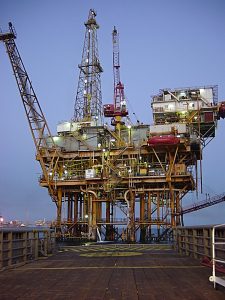What is the Legal Jurisdiction of an Offshore Oil Rig?
Posted in Oil Refinery Law,Work Site Injury on February 10, 2016
Working a physically demanding and potentially hazardous job on an Offshore Oil comes with a number plusses and minuses. On the one hand, the pay can be very lucrative. On the other hand, it can be long hours of dangerous work, and accidents do happen. If an accident happens at work on land, its obvious to all what the legal jurisdiction of the place of business is—you know exactly what city, county and state your office is in and therefore can look up any information you need.
But for offshore oil rigs, its not totally clear. You may be hundreds of miles out in the Gulf of Mexico, wondering technically what the legal jurisdiction of the rig is. There are a few handy pieces of information to know

A Gulf of Mexico Offshore Platform
The Outer Continental Shelf Lands Act
The first bit of info you will want to know is that this act, dating back to 1953, extends the Longshore and Harbor Workers’ Compensation Act to offshore oil platforms in the Outer Continental Shelf. This means that injured or killed workers and their families have a legal right to compensation in many cases. Prior to 1953, you could imagine the Rig workers had very little representation, and employers were therefore not as forthcoming with compensation for injuries.
The “Adjacent State Rule”
The Outer Continental Shelf Lands Act also put into place what we call the Adjacent State Rule. This rule states, as the name implies, that the rig falls under the jurisdiction of the nearest state. The most common adjacent state is Louisiana, with Texas being the second most common, followed by Mississippi and Alabama.
If you’ve or someone you love has been injured in and Oil Rig accident, it is important to know your rights and the responsibilities of the employer. Contact an experienced Outer Continental Shelf Lands Act lawyer as soon as possible.
